Salesforce.com 2010 Annual Report Download - page 38
Download and view the complete annual report
Please find page 38 of the 2010 Salesforce.com annual report below. You can navigate through the pages in the report by either clicking on the pages listed below, or by using the keyword search tool below to find specific information within the annual report.-
 1
1 -
 2
2 -
 3
3 -
 4
4 -
 5
5 -
 6
6 -
 7
7 -
 8
8 -
 9
9 -
 10
10 -
 11
11 -
 12
12 -
 13
13 -
 14
14 -
 15
15 -
 16
16 -
 17
17 -
 18
18 -
 19
19 -
 20
20 -
 21
21 -
 22
22 -
 23
23 -
 24
24 -
 25
25 -
 26
26 -
 27
27 -
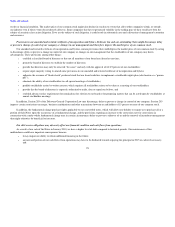 28
28 -
 29
29 -
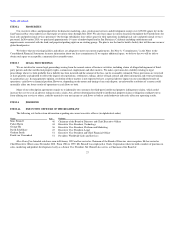 30
30 -
 31
31 -
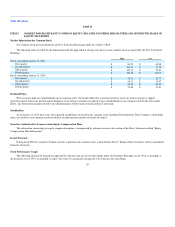 32
32 -
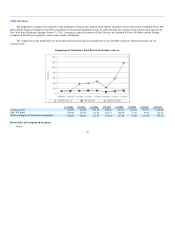 33
33 -
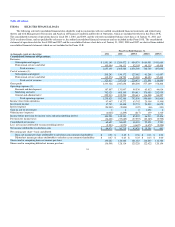 34
34 -
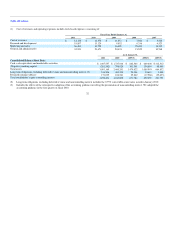 35
35 -
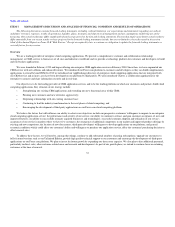 36
36 -
 37
37 -
 38
38 -
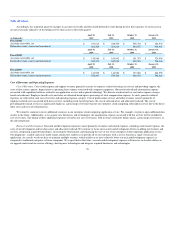 39
39 -
 40
40 -
 41
41 -
 42
42 -
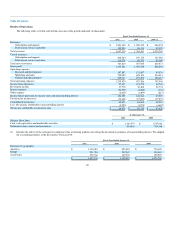 43
43 -
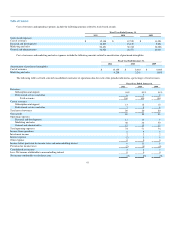 44
44 -
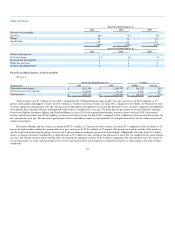 45
45 -
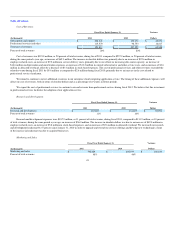 46
46 -
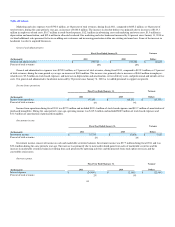 47
47 -
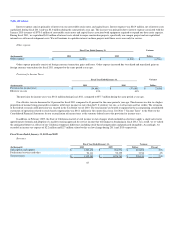 48
48 -
 49
49 -
 50
50 -
 51
51 -
 52
52 -
 53
53 -
 54
54 -
 55
55 -
 56
56 -
 57
57 -
 58
58 -
 59
59 -
 60
60 -
 61
61 -
 62
62 -
 63
63 -
 64
64 -
 65
65 -
 66
66 -
 67
67 -
 68
68 -
 69
69 -
 70
70 -
 71
71 -
 72
72 -
 73
73 -
 74
74 -
 75
75 -
 76
76 -
 77
77 -
 78
78 -
 79
79 -
 80
80 -
 81
81 -
 82
82 -
 83
83 -
 84
84 -
 85
85 -
 86
86 -
 87
87 -
 88
88 -
 89
89 -
 90
90 -
 91
91 -
 92
92 -
 93
93 -
 94
94 -
 95
95 -
 96
96 -
 97
97 -
 98
98 -
 99
99 -
 100
100 -
 101
101 -
 102
102 -
 103
103 -
 104
104 -
 105
105 -
 106
106 -
 107
107 -
 108
108 -
 109
109 -
 110
110 -
 111
111 -
 112
112 -
 113
113 -
 114
114 -
 115
115 -
 116
116 -
 117
117 -
 118
118 -
 119
119 -
 120
120 -
 121
121 -
 122
122 -
 123
123 -
 124
124 -
 125
125 -
 126
126 -
 127
127 -
 128
128 -
 129
129 -
 130
130 -
 131
131 -
 132
132 -
 133
133 -
 134
134 -
 135
135 -
 136
136 -
 137
137 -
 138
138 -
 139
139 -
 140
140 -
 141
141 -
 142
142 -
 143
143 -
 144
144 -
 145
145 -
 146
146 -
 147
147 -
 148
148 -
 149
149 -
 150
150 -
 151
151 -
 152
152 -
 153
153 -
 154
154 -
 155
155 -
 156
156 -
 157
157 -
 158
158 -
 159
159 -
 160
160 -
 161
161 -
 162
162 -
 163
163 -
 164
164 -
 165
165 -
 166
166 -
 167
167 -
 168
168 -
 169
169 -
 170
170 -
 171
171 -
 172
172 -
 173
173 -
 174
174 -
 175
175 -
 176
176 -
 177
177 -
 178
178 -
 179
179 -
 180
180 -
 181
181 -
 182
182 -
 183
183 -
 184
184 -
 185
185 -
 186
186 -
 187
187 -
 188
188 -
 189
189 -
 190
190 -
 191
191 -
 192
192 -
 193
193 -
 194
194 -
 195
195 -
 196
196 -
 197
197 -
 198
198 -
 199
199 -
 200
200 -
 201
201 -
 202
202 -
 203
203 -
 204
204 -
 205
205 -
 206
206 -
 207
207 -
 208
208 -
 209
209 -
 210
210 -
 211
211 -
 212
212 -
 213
213 -
 214
214 -
 215
215 -
 216
216 -
 217
217 -
 218
218 -
 219
219 -
 220
220 -
 221
221 -
 222
222 -
 223
223 -
 224
224 -
 225
225 -
 226
226 -
 227
227 -
 228
228 -
 229
229 -
 230
230 -
 231
231 -
 232
232 -
 233
233 -
 234
234 -
 235
235 -
 236
236 -
 237
237 -
 238
238 -
 239
239 -
 240
240 -
 241
241 -
 242
242 -
 243
243 -
 244
244 -
 245
245 -
 246
246 -
 247
247 -
 248
248 -
 249
249 -
 250
250 -
 251
251 -
 252
252 -
 253
253 -
 254
254 -
 255
255 -
 256
256 -
 257
257 -
 258
258 -
 259
259 -
 260
260 -
 261
261 -
 262
262 -
 263
263 -
 264
264 -
 265
265 -
 266
266 -
 267
267 -
 268
268 -
 269
269 -
 270
270 -
 271
271 -
 272
272 -
 273
273 -
 274
274 -
 275
275 -
 276
276 -
 277
277 -
 278
278 -
 279
279 -
 280
280 -
 281
281 -
 282
282 -
 283
283 -
 284
284 -
 285
285 -
 286
286 -
 287
287 -
 288
288 -
 289
289 -
 290
290 -
 291
291 -
 292
292 -
 293
293 -
 294
294 -
 295
295 -
 296
296 -
 297
297 -
 298
298 -
 299
299 -
 300
300 -
 301
301 -
 302
302 -
 303
303 -
 304
304 -
 305
305 -
 306
306 -
 307
307 -
 308
308 -
 309
309 -
 310
310 -
 311
311 -
 312
312 -
 313
313 -
 314
314 -
 315
315 -
 316
316 -
 317
317 -
 318
318 -
 319
319 -
 320
320 -
 321
321 -
 322
322 -
 323
323 -
 324
324 -
 325
325 -
 326
326
 |
 |

Table of Contents
Subscription and support revenues are recognized ratably over the contract terms beginning on the commencement dates of each contract. The typical
subscription and support term is 12 to 24 months, although terms range from one to 60 months. Our subscription and support contracts are non-cancelable,
though customers typically have the right to terminate their contracts for cause if we materially fail to perform. We generally invoice our customers in
advance, in annual or quarterly installments, and typical payment terms provide that our customers pay us within 30 days of invoice. Amounts that have been
invoiced are recorded in accounts receivable and in deferred revenue, or in revenue depending on whether the revenue recognition criteria have been met. In
general, we collect our billings in advance of the subscription service period.
Professional services and other revenues consist of fees associated with consulting and implementation services and training. Our consulting and
implementation engagements are typically billed on a time and materials basis. We also offer a number of classes on implementing, using and administering
our service that are billed on a per person, per class basis. Our typical payment terms provide that our customers pay us within 30 days of invoice.
We generally recognize revenue ratably over the contract terms beginning on the commencement date of each contract. In determining whether
professional services can be accounted for separately from subscription and support revenues, we consider a number of factors, which are described in
"Critical Accounting Policies and Estimates—Revenue Recognition" below. As we introduce new service offerings, we may not be able to establish objective
and reliable evidence of fair value for these elements of our sales arrangements. As a result, when the professional services are sold together with subscription
services that do not have objective and reliable evidence of fair value, the professional services fees cannot be accounted for separately, and the entire
arrangement is accounted for as a single unit of accounting. In such situations, we recognize the entire arrangement fee ratably over the term of the
subscription contract. Approximately 6 percent of our total deferred revenue as of January 31, 2011 and 2010 respectively, related to deferred professional
services revenue. At the start of fiscal 2012 we will be adopting the provisions of ASU 2009-13. Adopting this provision will change our accounting for
multiple-element arrangements, see Recent Accounting Pronouncement.
Seasonal Nature of Deferred Revenue and Accounts Receivable
Deferred revenue primarily consists of billings to customers for our subscription service. Over 90 percent of the value of our billings to customers is for
our subscription and support service. We generally invoice our customers in either quarterly or annual cycles, with a disproportionate weighting towards
annual billings in the fourth quarter, primarily as a result of large enterprise account buying patterns. Additionally, our fourth quarter has historically been our
strongest quarter for new business. The year on year compounding effect of this seasonality in both billing patterns and overall new business is causing the
value of invoices that we generate in the fourth quarter for both new and existing customers to increase as a proportion of our total annual billings.
35
